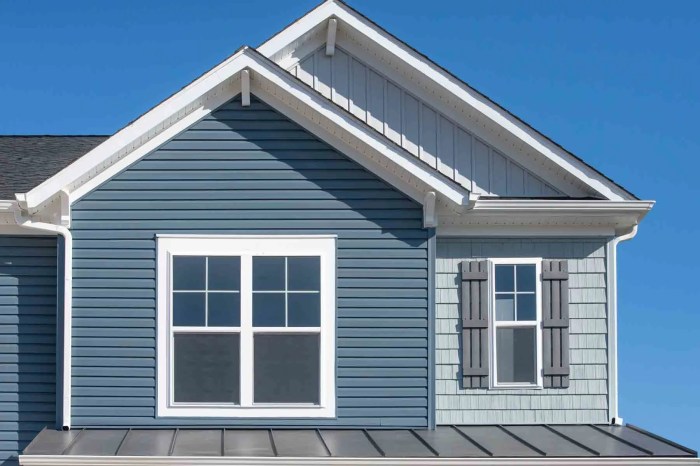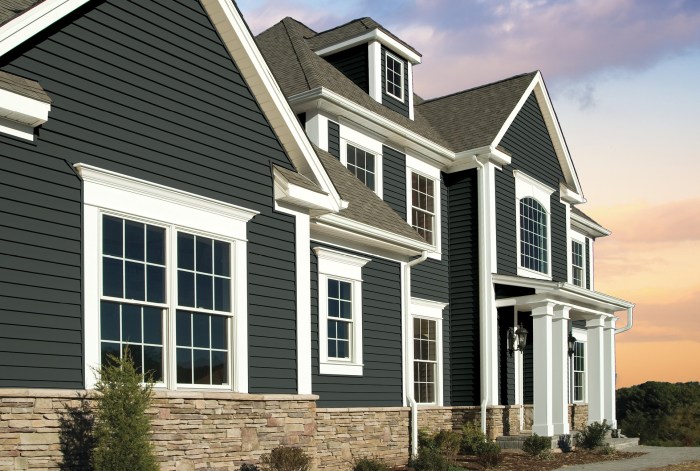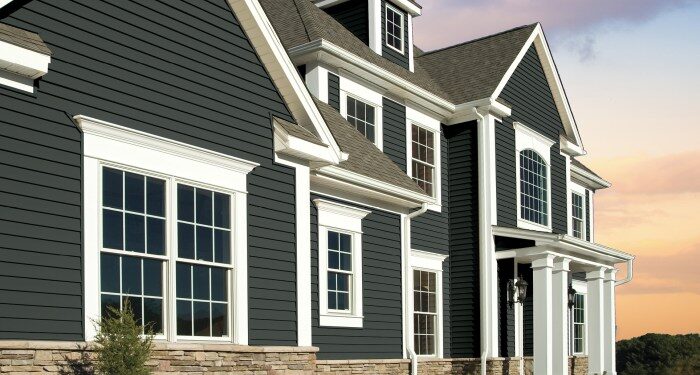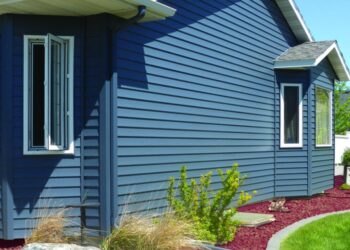Exploring the world of vinyl siding near me opens up a realm of possibilities for homeowners looking to enhance the exterior of their houses. From choosing the right type to understanding the costs involved, this guide covers everything you need to know about vinyl siding.
Researching Vinyl Siding Companies
When looking for reputable vinyl siding companies in your area, it is essential to conduct thorough research to ensure you choose a reliable and credible company for your home improvement project.
List of Reputable Vinyl Siding Companies
- ABC Siding Company
- XYZ Exterior Solutions
- 123 Home Renovations
Evaluating Reputation and Credibility
Before selecting a vinyl siding company, it is crucial to evaluate their reputation and credibility. Look for factors such as:
- Years of experience in the industry
- Customer reviews and ratings
- Accreditations and certifications
- Portfolio of past projects
Importance of Reading Reviews and Testimonials
Reading reviews and testimonials from previous customers can provide valuable insights into the quality of work and customer service provided by a vinyl siding company. Consider:
- Overall satisfaction levels
- Attention to detail
- Timeliness of project completion
- Communication with customers
Types and Styles of Vinyl Siding

Vinyl siding is a popular choice for homeowners due to its durability, low maintenance, and versatility in design. There are several types and styles of vinyl siding available in the market to suit different preferences and architectural styles.
Types of Vinyl Siding
- Traditional Vinyl Siding: This is the most common type of vinyl siding, known for its horizontal panels that mimic the look of wood.
- Vertical Vinyl Siding: Vertical siding offers a unique and modern look, ideal for contemporary or industrial-style homes.
- Shake Vinyl Siding: Shake siding replicates the appearance of cedar shakes, adding a rustic charm to the exterior of a home.
- Scallop Vinyl Siding: Scallop siding features curved or wavy edges, creating a whimsical and decorative touch to the facade of a house.
Styles of Vinyl Siding
- Horizontal Vinyl Siding: The traditional horizontal layout is timeless and versatile, suitable for various architectural styles.
- Vertical Vinyl Siding: Vertical panels offer a modern and sleek aesthetic, often chosen for contemporary homes or commercial buildings.
- Shake Vinyl Siding: Shake siding provides a rustic and textured appearance, perfect for cottages or homes with a country feel.
- Scallop Vinyl Siding: Scallop siding adds a decorative element with its curved edges, ideal for Victorian or cottage-style homes.
Color Options and Finishes
Vinyl siding comes in a wide range of colors and finishes to complement different design preferences and architectural styles. Common color options include earth tones, neutrals, blues, greens, and grays. Additionally, vinyl siding can have finishes that mimic wood grain, brushed textures, or smooth surfaces.
Homeowners can choose a color and finish that best suits their aesthetic vision for their home's exterior.
Cost and Budgeting
When it comes to vinyl siding installation, understanding the costs involved and budgeting effectively are crucial steps in ensuring a successful project. Let's delve into the typical costs, factors influencing pricing, and tips for budgeting.
Typical Costs of Vinyl Siding Installation
- On average, the cost of vinyl siding installation ranges from $5 to $12 per square foot.
- This cost includes materials, labor, and any additional expenses such as removal of old siding or repairs.
- For a typical 1,500 square foot home, the total cost can vary between $7,500 to $18,000.
Factors Influencing Vinyl Siding Installation Costs
- The size of your home: Larger homes will naturally require more materials and labor, leading to higher costs.
- Siding quality: Higher quality vinyl siding will come at a higher price point but may offer better durability and aesthetic appeal.
- Additional features: Factors such as trim work, insulation, and custom details can add to the overall cost.
Tips for Budgeting a Vinyl Siding Project
- Get multiple quotes: Reach out to several vinyl siding companies to compare prices and services before making a decision.
- Plan for unexpected expenses: Set aside a contingency fund for any unforeseen issues that may arise during the installation process.
- Consider financing options: Explore financing plans or loans to spread out the cost of the project over time if needed.
Installation Process
Installing vinyl siding on a home involves several key steps to ensure a proper and durable finish. Proper insulation and preparation are crucial to the success of the installation process. Hiring a professional installer can provide peace of mind and ensure a high-quality result, but some homeowners may consider attempting a DIY installation to save costs.
Let's delve into the details below.
General Steps in Installing Vinyl Siding
- Prepare the surface: Ensure the walls are clean, dry, and free of any debris before starting the installation.
- Install insulation: Proper insulation helps improve energy efficiency and protects against moisture damage.
- Measure and cut siding panels: Accurate measurements are essential to achieve a seamless look.
- Attach the siding panels: Secure the panels to the walls using nails or clips, following manufacturer guidelines.
- Finish with trim pieces: Add finishing touches with corner pieces, J-channels, and other trim elements.
Importance of Proper Insulation and Preparation
Proper insulation helps regulate indoor temperature, reduce energy costs, and protect the home from moisture damage. Thorough preparation ensures a smooth and even surface for the siding installation, preventing issues such as warping or buckling.
Tips for Hiring a Professional Installer vs. DIY
- Professional Installer: Hiring a professional ensures expertise, efficiency, and a warranty on the work. It can save time and prevent costly mistakes.
- DIY Installation: DIY projects can save money but require time, effort, and skill. Homeowners should carefully assess their abilities and the complexity of the job before attempting to install vinyl siding themselves.
Maintenance and Durability

Vinyl siding is known for being low maintenance, making it a popular choice among homeowners. To keep vinyl siding looking good, regular cleaning is essential. This can be done with a mixture of water and mild soap, using a soft brush or cloth to gently scrub away dirt and grime.
It's important to avoid using harsh chemicals or abrasive materials that could damage the siding.
Durability of Vinyl Siding
Vinyl siding is highly durable and can withstand various weather conditions, including rain, snow, and high winds. Unlike wood siding, vinyl does not rot, warp, or split over time. It is also resistant to pests like termites, which can be a common issue with other siding materials.
With proper care and maintenance, vinyl siding can last for decades without needing to be replaced.
- Vinyl siding is resistant to moisture, making it less susceptible to mold and mildew growth.
- It does not require painting, saving homeowners time and money on maintenance.
- Vinyl siding is available in a wide range of colors and styles, allowing homeowners to customize their exterior appearance.
Tips to Extend the Lifespan of Vinyl Siding
Proper care and maintenance can help extend the lifespan of vinyl siding even further. Here are some tips to keep your vinyl siding looking great for years to come:
- Regularly clean the siding with a gentle soap and water solution to remove dirt and grime.
- Inspect the siding for any damage, such as cracks or holes, and repair them promptly to prevent water infiltration.
- Trim any nearby trees or bushes to prevent branches from scratching or damaging the siding.
- Avoid using pressure washers on vinyl siding, as the high pressure can cause damage to the material.
Conclusive Thoughts
In conclusion, vinyl siding near me offers a versatile and durable option for homeowners seeking to upgrade their home's appearance. By following the tips and insights provided in this guide, you can make informed decisions and ensure a successful siding project.
User Queries
What are the benefits of vinyl siding?
Vinyl siding is known for its low maintenance, durability, and versatility in terms of colors and styles.
How long does vinyl siding typically last?
With proper care and maintenance, vinyl siding can last anywhere from 20 to 40 years.
Can I paint my vinyl siding?
It is possible to paint vinyl siding, but it's important to use the right type of paint and follow proper preparation techniques.















